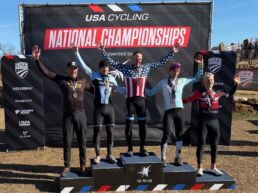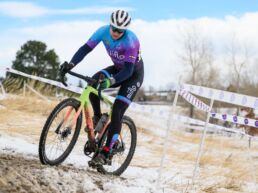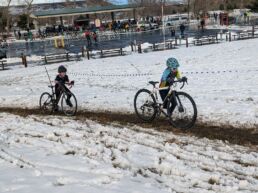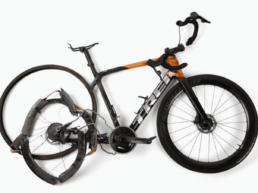The following article was written by Gale Bernhardt and originally ran on her website: http://galebernhardt.com/
When Jerry Nichols heard the results from his February CT Calcium Scan, at first he was in complete disbelief. After all, the only reason he got the scan done was to confirm what he believed to be true. His belief was that he was free of heart disease due to eating healthy, exercising, managing his weight and keeping an eye on his blood pressure and cholesterol numbers. All of his marks were good. He had no symptoms that would raise a red flag.
 After the disbelief came shock. After the shock he was scared – the prescription was “No high intensity or extended exercise until you see a cardiologist. And, I’m prescribing a statin for you to begin today.”
After the disbelief came shock. After the shock he was scared – the prescription was “No high intensity or extended exercise until you see a cardiologist. And, I’m prescribing a statin for you to begin today.”
And then he was mad. He took stellar care of his body, he did exactly what experts told him to do – and now this?!
Let’s go back and take a look at Jerry’s journey in the last two months.
Awareness and health markers
Jerry is one of the riders that shows up on my doorstep each Sunday morning. He was friends with Scott Ellis and rode many group rides with Scott. In the months after Scott’s passing, I was an intense investigator of heart disease and what could have possibly caused Scott’s death. Each Sunday I would tell riders what I had learned that week. How Scott had significant heart disease, how it went undetected and how there are tests that many people, including me, didn’t know about.
In November or December of 2015, Jerry thought that he might talk to his doctor about having a CT Calcium Scan – one of the tests to detect calcified plaque. In the last two years, his cholesterol numbers typically ran around 169 to 185 mg/dL, below the recommended 200 mg/dL. His HDL value was high, a good thing, at 48 to 50 mg/dL. His HDL to cholesterol ratio was between 3.5 and 3.7 – well below the number 5 that doctors recommend. His triglyceride level was well below the recommended value at 64 mg/dL – less than half the danger mark of 150 mg/dL.
His blood pressure was typically 120/72, considered good. His resting heart rate runs around 41 beats per minute.
He always felt great about his annual doctor visits because his health markers were considered very good. He was healthy and in fantastic shape for someone half his age, a very young 62.
CT Calcium Scan
In January of 2016, Jerry visited his primary care physician and mentioned Scott’s death as well as his knowledge about the CT Calcium Scan. He asked if the doctor thought it would be a good test to do? The doctor said yes, so an appointment was set for February.
On February 20th, Jerry had the scan. His doctor got ahold of him immediately after the scan and asked him to come into the office. When Jerry when to the office, he heard the results of the CT Scan – a total score of 502 and the shocking bottom line read “indicates evidence of potentially significant coronary heart disease.”
How is this possible? In addition to his good health marks, there is no heart disease in his family history.
Jerry told me, “It is hard to put into words how I felt. I felt shocked. My head was spinning with questions – lots of questions. I had a flood of emotions including fear and anger. I also felt some guilt – as if I had done something wrong.”
Jerry hadn’t done anything wrong. He did not bring this on himself due to lack of self-care. He followed recommended guidelines for nutrition and had been fit and healthy his entire life.
Jerry’s primary care physician immediately put him on daily baby aspirin, a statin medication and recommended he see a cardiologist as soon as possible. In the meantime, cut down on exercise volume and intensity.
Was there a chance he could have a heart attack during a fast ride? Jerry heeded the advice and set about finding a cardiologist.
Cardiologist #1
The cardiologist Jerry wanted to see was booked up for weeks, so he took the first available appointment with a different cardiologist. The cardiologist was concerned with the CT Calcium score and he suggested a treadmill stress test, with a nuclear isotope injection. It is commonly called a nuclear stress test.
For this test, medical experts injected a radioactive substance into Jerry’s veins and took images of his heart at a resting state. Then, they had him do a treadmill run where the grade increased at regular intervals. Late in the test they injected the isotope. Jerry got off the treadmill and they took more images.
Jerry was able to complete the test, achieving 17.5 METS (above 10 is considered very good). His heart rate, blood pressure and other markers were also very good. Near the end of the test his test leads were falling off due to sweat – if this weren’t happening, perhaps he could have gone longer.
The result from the stress test came back normal*, that Jerry was at low risk for a cardiovascular event (fatal or nonfatal heart attack). The cardiologist told Jerry that he planned to increase his statin medication from 10mg to 20mg in order to drive Jerry’s cholesterol even lower – the doctor wanted Jerry’s cholesterol number cut in half.
The doctor told him he could go ahead and ride his bike – but only easy rides.
Jerry wondered why the CT Calcium score was high. How could the stress test be so good? He wondered how cutting cholesterol even more was going to help anything? After some thought, and a gut feeling, Jerry decided that he didn’t connect well with this cardiologist. He felt the doctor was dismissive to his questions and concerns. He decided to make an appointment with a second cardiologist.
*Note: It is not unusual for fit people to test normal on treadmill stress tests.
Cardiologist #2
The second cardiologist Jerry visited reviewed all previous test results and information. This doctor said that given Jerry’s history and CT Calcium scan results, he would have ordered a coronary catheter procedure rather than a treadmill stress test. But…was this really necessary now?
Jerry connected well with the second cardiologist. The doctor addressed Jerry’s questions and concerns. Given all of the information the doctor recommended Jerry do the coronary catheter procedure.
Cardiac catheterization procedure
Two months after his CT Calcium scan, Jerry had a cardiac catheterization procedure. For this procedure, Jerry had the choice of staying awake or having a sedative. He decided to stay awake and alert during the procedure.
The medical team fed a tiny wire into an artery in Jerry’s wrist. Up his arm and into his chest, the wire went. Jerry said he could feel a slight sensation of the wire traveling up his arm, but once in his chest there was no sensation at all.
Jerry watched the x-ray video monitor as the wire went into his heart to examine any blockages and to measure flow pressures on either side of any blockages.
During the procedure, one catheter shot contrast dye into various areas of Jerry’s heart to give the cardiologist a better view of blockages and the dye is also helpful in artery navigation. Where there is a blockage, the team takes measurements to determine how much of the artery is blocked. If the blockage is equal to or greater than 70%, that blockage is immediately stented.
The first place that showed trouble was Jerry’s Right Coronary Artery (RCA), blocked at 60%. However, because the team measured no restricted flow on either side of the blockage, no stent would be installed. Installing a stent in this situation could actually make things worse – negatively affecting blood flow.
They also examined the Ramus artery and it showed 40% blockage, with no flow problems. No stent would be installed.
The spot that did show trouble was Jerry’s Left Anterior Descending Artery (LAD) – it was 95% blocked! Due to the size of the blockage, the team immediately installed a stent in this location – in the artery also known as “the widow maker.”
A ticking time bomb
Jerry’s second cardiologist told him that he was a “ticking time bomb,” a person with a significant cardiac event waiting to happen.
With the stent installed and a statin medication to help stabilize the plaque, his chances of having a major cardiac event in the future are greatly reduced.
Go back to riding your bike and racing
One week after Jerry’s stent installment, his cardiologist told him to get back on his bike and begin riding again. He had the okay to slowly increase training duration and intensity. He could go back to racing again.
How does this apply to you?
Awareness is the first step. Know that low cholesterol, high HDL, low heart rate, good blood pressure, no family history of heart disease and no recognizable symptoms DOES NOT mean an absence of heart disease – even in fit athletes.
Jerry commented, “The CT Calcium Scan was the best $200 I ever spent. To me it was an insurance policy that paid off.”
Is the CT Calcium Scan necessary for everyone? Good question. Talk to your physician about the heart disease screening tests mentioned in Scott’s story. Do your own research and seek a second opinion of necessary.
A special thank you to Jerry Nichols for helping me assemble this column. His willingness to share the details of his journey will no doubt help – perhaps save – other people.
